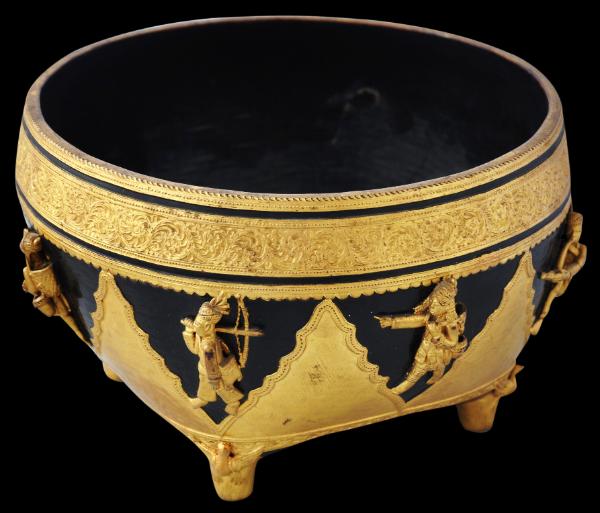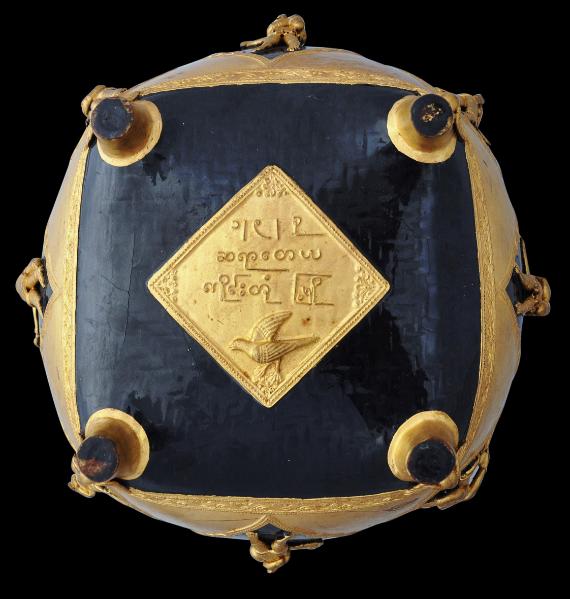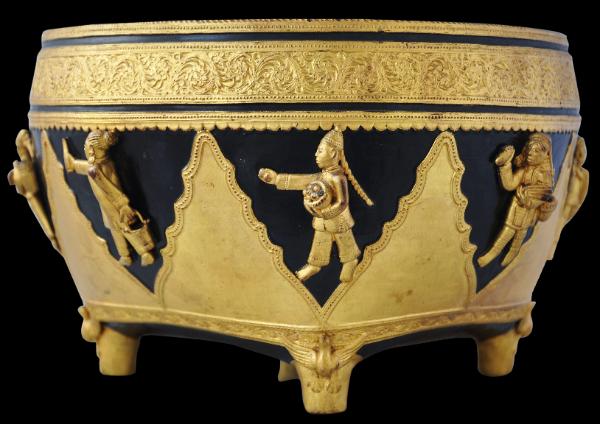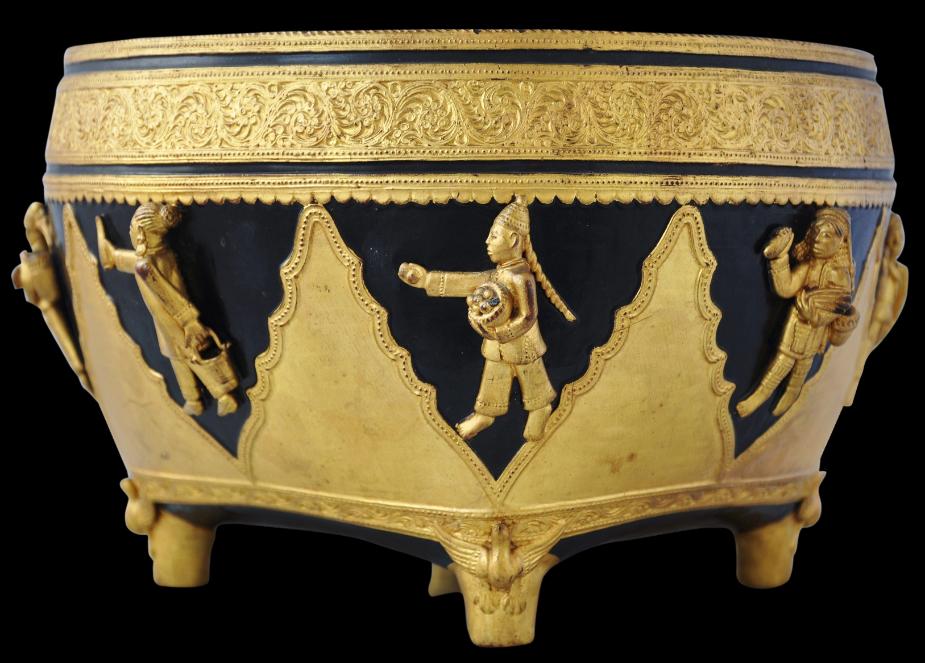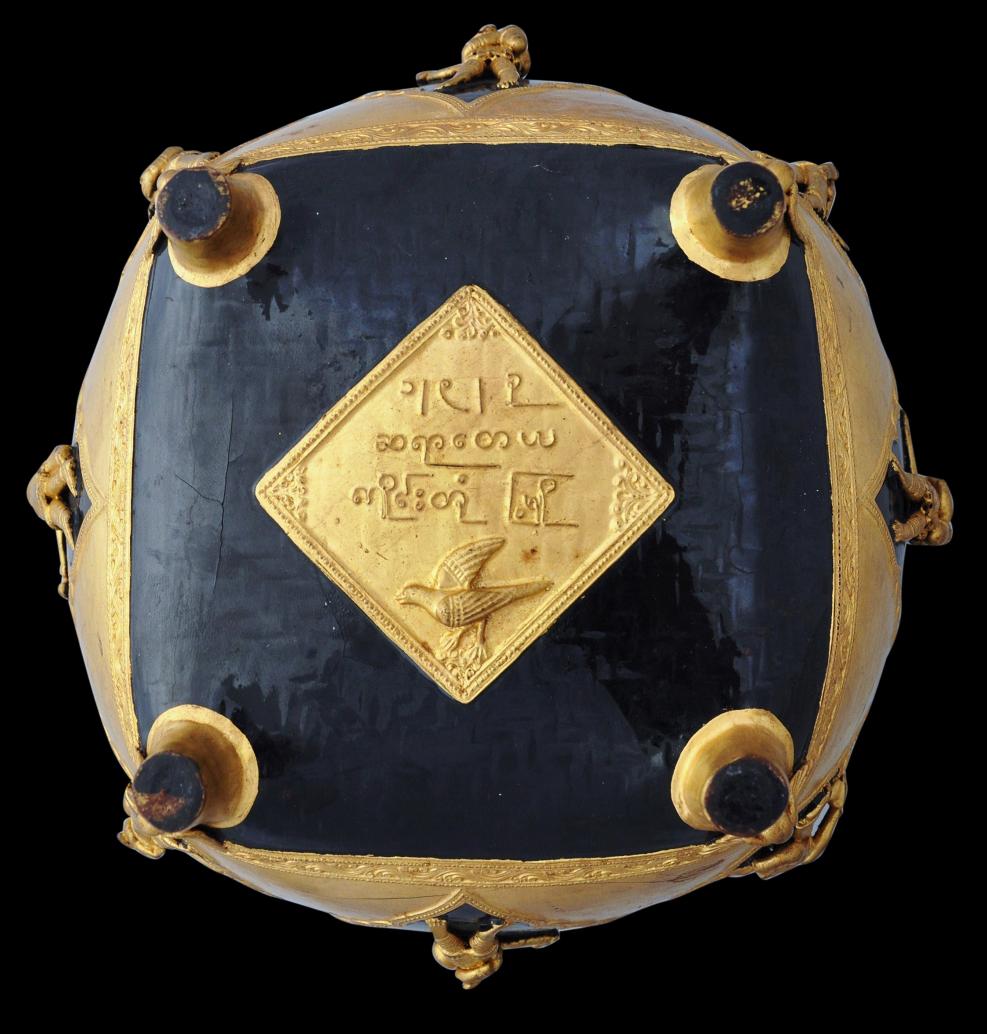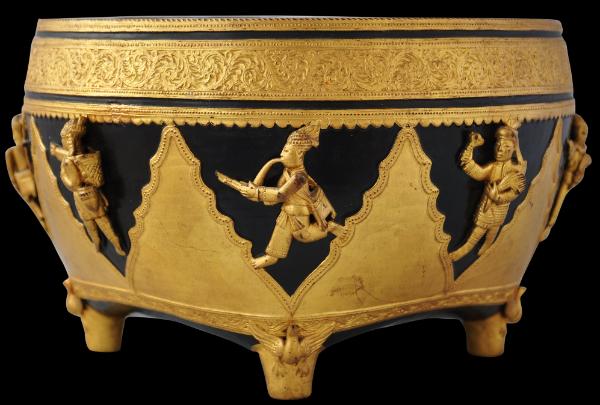
Shan Kengtung Burmese Lacquer Bowl
Ceremonial Gold Leaf & Lacquer Bowl (Ko Kau Tu) by Hsaya (Master) Tay Ya
Kengtung, Shan States, Burma
dated 1930
height:15cm, diameter: 23.5cm
This superbly executed bowl of lacquer over a woven bamboo base has eight gilded (from high-carat gold leaf) panels of figures in high-relief dressed in indigenous costume of Kengtung and surrounding areas including the Akha, Khun, Lahu and Khamu, against a black ground, interspersed with broad, triangular panels of gold. Singer (1991) concludes that each of the costumed figures used to decorate such bowls were not the product of moulds but in fact were made individually by hand.
Both a broad, gilded border at the top, and a thin border towards the base, are decorated with thayo work – a process whereby thin, rolled strands of lacquer and ash putty are applied in patterns.
The feet are decorated with crows, wings outstretched. The crow is thought to be associated with legends relating to the founding of Kengtung (Fraser-Lu, 2000). Perhaps unusually, the crows on this bowl face directly out with their beaks jutting out. Most published examples that feature crows have the crows’ heads facing sideways with the beaks more safely running against the side of the leg.
The base is decorated with a gilded cartouche that has thayo in Burmese script – it names the maker as Hsaya Tay Ya (Hsaya being the term for ‘Master’) – and has another crow in high relief. According to Ralph Isaacs, co-author of the authoritative work on Burmese lacquer, Burma and the Art of Lacquer (2000), the cartouche also includes a date. One number is rendered unusually, but the date is likely to accord with 1930. Isaacs also suggests that the crow on the signature cartouche on the base is unique. Hsaya Tay Ya is the maker of two bowls illustrated in Isaacs & Blurton (2000, p. 186 & 210). Both bowls are now in the British Museum collection.
Surviving Kengtung bowls of this type are relatively rare and those that are in good condition are rarer still. This example is in particularly fine condition: only a small area of gilding on one lower panel has been repaired, and the extremities of the high-relief largely are intact, and according to Isaacs, ‘exceptionally well modelled’.
Kengtung became known for producing lacquerware rice baskets (ko-kau-te) that originally started out plain but became elaborately embellished with medallions, bands of scrolling foliage and human figures in indigenous costume in the first part of the twentieth century. Originally such baskets were used to hold rice flour at religious festivals, and also were used as presentation pieces. Bowls made using this technique are illustrated in Fraser-Lu (222, p. 165-6), Isaacs & Blurton (2000), Conway (2006, p. 135), and Singer (1991).
Kengtung was the largest and easternmost of the Shan states and was ruled by a prince from the Tai Khoen ethnic group. It has had a small lacquerware industry since the eighteenth century.
References:
Conway, S., The Shan: Culture, Arts & Crafts, River Books, 2006.
Fraser-Lu, S., Burmese Crafts: Past and Present, Oxford University Press, 1994.
Fraser-Lu, S., Burmese Lacquerware, White Orchid Books, 2000.
Isaacs, R., & T.R. Blurton, Burma and the Art of Lacquer, River Books, 2000.
Singer, N., ‘Jengtung Lacquerware’ in Arts of Asia, September-October 1991.
Provenance
UK art market
Inventory no.: 1233
SOLD

